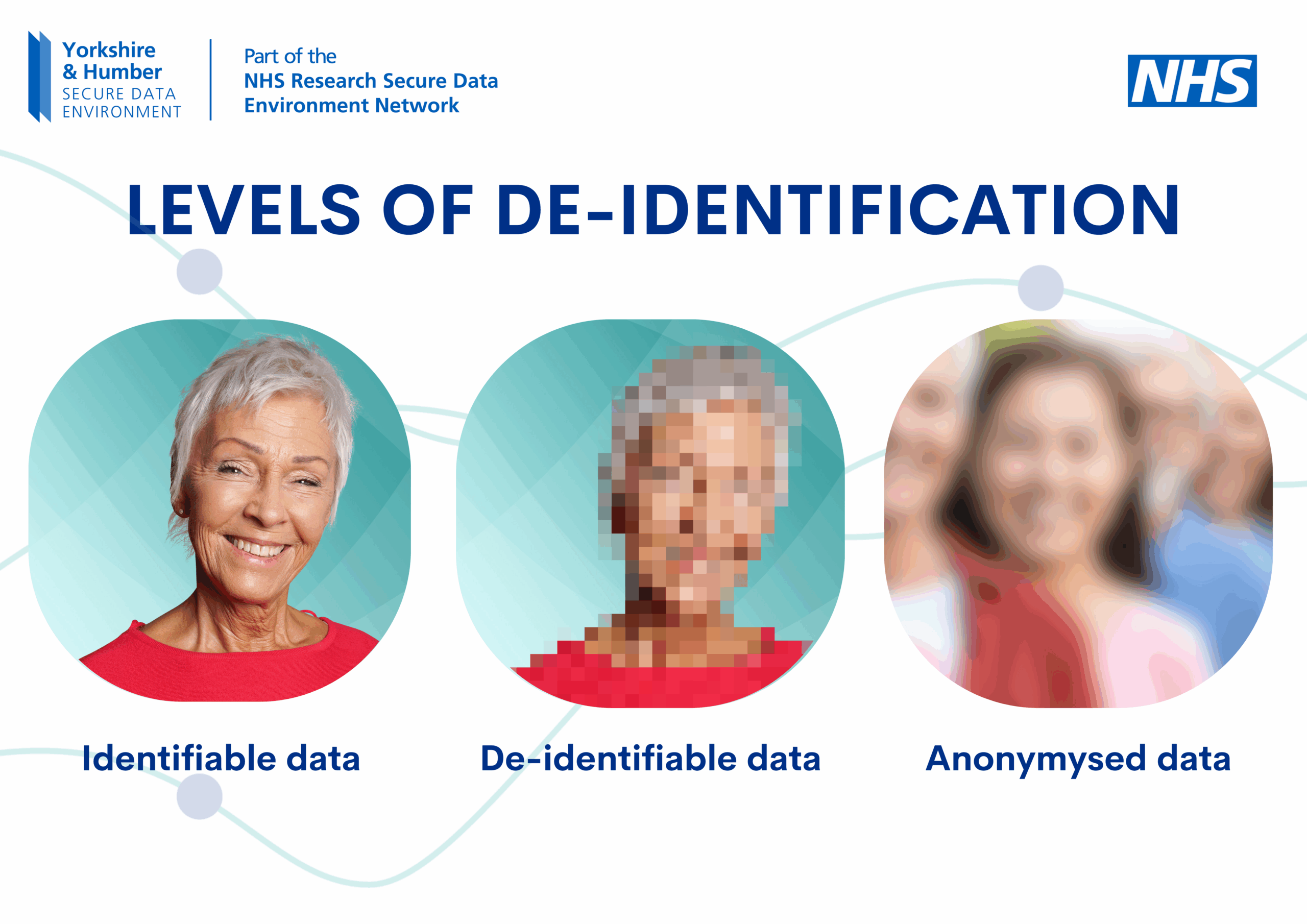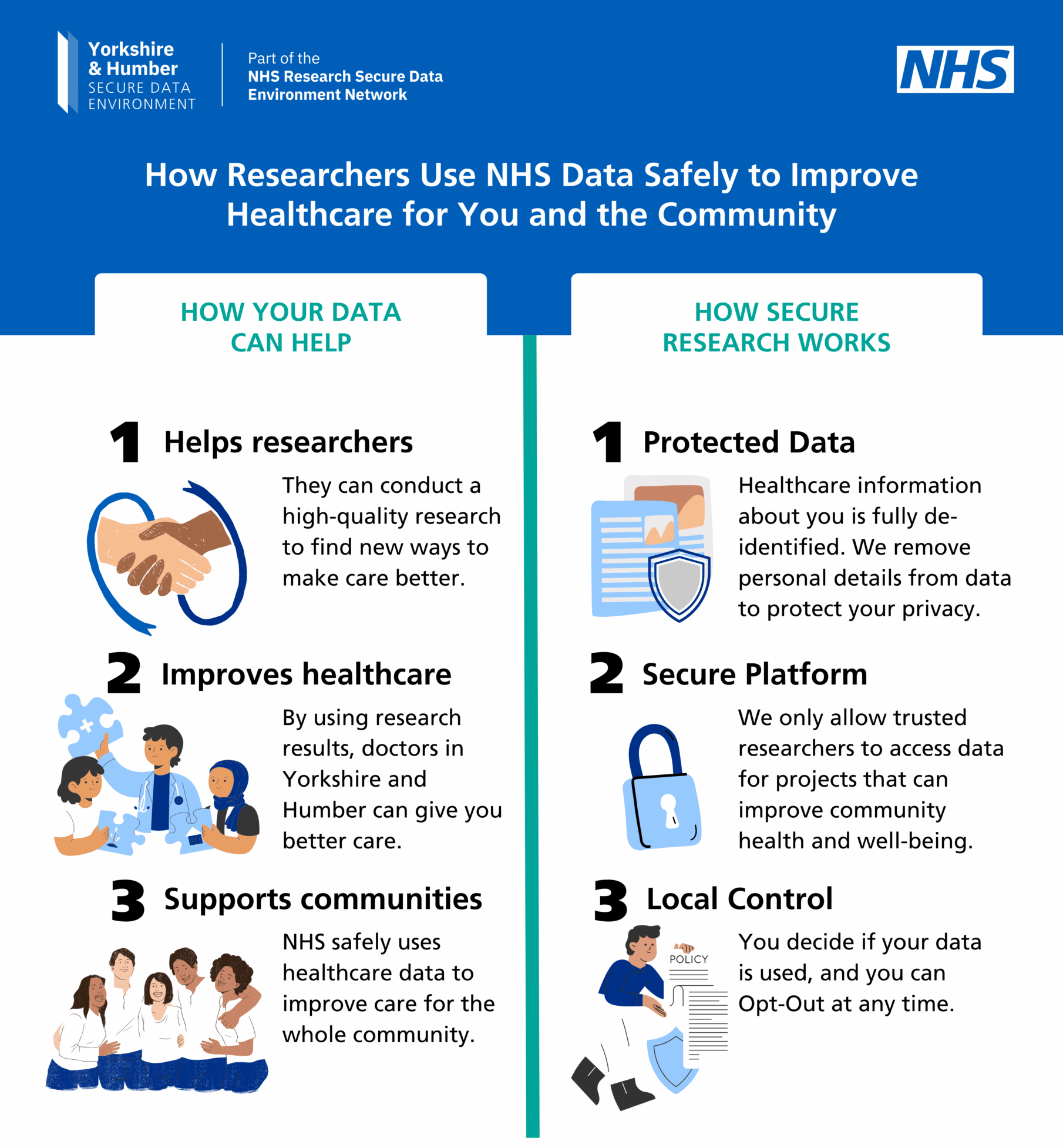Identifiable data contains information that can directly or indirectly identify specific individuals. This includes personal identifiers like a person’s name, address, and age.
De-identifiable data has had personal identifiers removed or altered to prevent identification of individuals. The process often involves:
- Removing direct identifiers (names, addresses, identification numbers)
- Generalising specific details (using year of birth instead of full date, or partial postcodes instead of full ones)
- Using pseudonymisation*, where personally identifiable information is replaced with artificial identifiers
*Pseudonymisation helps keep personal data private and secure, especially in research or data analysis. It means people’s information can be used without exposing who they are.

The Yorkshire & Humber Secure Data Environment complies with General Data Protection Regulation (GDPR) and UK Data Protection Act requirements. It means that the data inside the SDE is de-identifiable. Researchers access de-identified data for their analysis inside the SDE and can’t find whose data it is.
Find out more about levels of at Identifiability demystified by Understanding Patient Data
There are occasions where you can remove lots of pieces of (i.e., address, date of birth, etc.) but through the rest of the information a person could still be identified. For example, if you were looking at who is a teacher and number of smokers and who is a non-smoker in a small town you could by having a narrow pool of people be able to guess who the smokers are. This is called ‘indirectly identifiable data’.
Although this is not very common, every piece of analysed data is checked by trained specialist staff in a process known as Statistical Disclosure Control (also known as ‘output checking’). To make sure this kind of indirectly identifiable data never leaves the Secure Data Environment, the specialist staff check every piece of analysed data (including charts, tables and graphs) to make sure it would not indirectly identify an individual.


